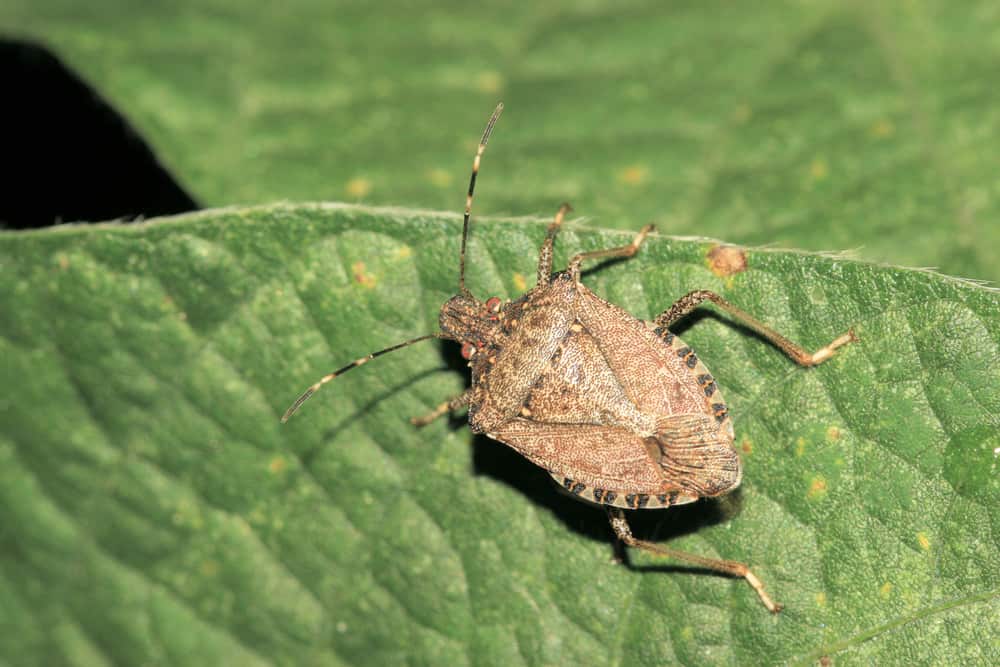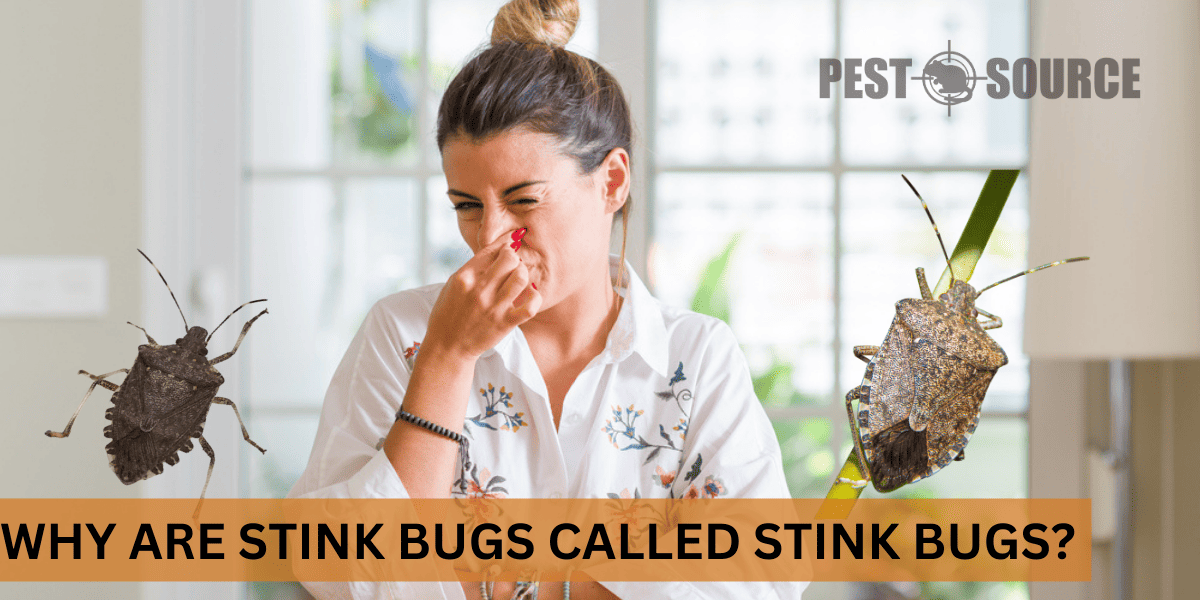Everyone’s encountered that unshakeable, unpleasant odor at some point—the strong, penetrating stench that cuts through the air, enduring and hardly ignorable. Upon investigation, you’re likely to find a small, harmless-looking insect at the source. Meet the stink bug, an insect famous for emitting a scent that repels predators and annoys humans alike. But have you ever wondered why stink bugs are called “stink bugs”?
In this guide, we dive into the science behind the notorious odor of these pests, why they produce it, and how it serves them in their day-to-day survival. We will also explore how humans perceive this peculiar odor and discuss safety concerns regarding stink bug secretions—revealing the facts and debunking myths.
POINTS
- Stink bugs, named for their foul-smelling odor, have embedded glands in their thorax and abdomen which produce the infamous stench. This odor acts as a deterrent for predators and is composed mainly of aldehyde compounds: trans-2-decenal and trans-2-octenal.
- The stinky secretion of these bugs serves numerous functions beyond repelling predators. It aids in chemical communication, possesses antimicrobial properties, attracts mates, and provides nourishment. Furthermore, the compounds in the secretion are being researched for their potential as a biopesticide.
- The defensive smell does not guarantee complete protection against all predators. Some pests have adapted to tolerate or even exploit the smell, reinforcing that no defense mechanism is entirely foolproof.
- Humans perceive the stink bug odor differently. Common descriptors include cilantro, sulfur, ammonia, rancid meat, and rotten fruits or vegetables, among others. The smell can persist for hours but will eventually dissipate.
- While annoying, stink bug secretions are generally not harmful. However, in rare instances, they can produce allergic reactions. Individuals with an allergic response should cleanse the affected area and seek medical attention if severe symptoms persist.
How Stink Bugs Earned Their Name
What are Stink Bugs?

Stink bugs are insects known for their infamous characteristic – emitting a foul-smelling odor when threatened or crushed. Equipped with specialized glands, these bugs produce an unpleasant scent, serving as their primary defense mechanism against predators.
Why Are Stink Bugs Called “Stink Bugs”?
Stink bugs are so named because of their distinctive strategy for warding off threats. More specifically, when a stink bug feels threatened or is crushed, it releases a liquid from its glands that permeates the air with an incredibly foul and unpleasant odor. This secretion strategy is not just a feature of their personality, but a powerful tool for survival, earning them the unflattering but accurate moniker – “Stink Bugs.”
The Source of the Odor
What Glands Are Responsible For The Production Of The Foul-Smelling Odor?
The offensive odor is produced by specialized glands located on the underside of the stink bug’s thorax and the back section of their abdomen. These glands function as an integral component of the bug’s defense system, producing the foul-smelling liquid that has earned this species its name.
What Chemical Compounds Are Found In The Odor Emitted By Stink Bugs?
Stink bugs secrete predominantly two aldehyde compounds, trans-2-decenal and trans-2-octenal. Ironically, these compounds are often used in flavorings and aromas for food. Yet, when released by stink bugs, they combine to create a truly potent and off-putting smell.
How Do Stink Bugs Release This Unpleasant Smell?
When a stink bug is disturbed or senses danger, it routinely discharges the odor-laden liquid from its glands. The liquid then evaporates into the air and spreads quickly, permeating the surrounding space with its detestable stench. This characteristic smell serves as an effective repellent, deterring potential predators from attempting to feast on the bug. However, it’s not infallible—some predators have adapted to this defensive tactic and continue to prey on stink bugs.
The Primary Function of the Secretion
How Does the Odor Protect Stink Bugs From Predators?
The odor emitted by stink bugs acts as their main line of defense. When the distasteful smell pervades the air, it acts as a potent deterrent, steering many potential predators away. Instead of becoming a meal, the stink bug is left well alone, with its unpleasant odor marking it as unsavory or even toxic to eat. This unique deterrent strategy has been particularly effective for this insect species, boosting their survival rate in the wild.
Is This Defense Mechanism Foolproof?
No defense mechanism is completely foolproof, and this is true for stink bugs as well. Although the distinctive smell they emit is generally effective, some predators are not deterred and have become adept at preying on stink bugs despite the stench. So, while the odor does provide a level of protection, it does not guarantee complete safety against all predators.
Other Functions of the Secretions of Stink Bugs
While defense against predators is the primary function of the foul odor, the secretion from stink bugs serves additional purposes:
- Chemical Communication: The chemicals in the secretion can signal danger to other stink bugs. This helps them stay alert or avoid threatened areas.
- Antimicrobial Properties: The secretion might possess antimicrobial properties, serving to protect the bugs against microbial infections.
- Attracting Mates: Stink bugs use different chemicals, known as pheromones, during mating. These pheromones help attract mates and are separate from the defensive secretions they release when threatened.
- Nourishment: In some cases, the secretions can provide nutrients. In fact, certain types of ants have been observed feeding on these secretions.
- Biopesticide: Researchers are studying the compounds in stink bug secretions for potential use in developing environmentally-friendly pesticides.
These additional functions further prove how essential the secretions are to the life and survival of stink bugs. Its significance is not merely limited to its foul odor, but serves functions that play a crucial role in the life cycle and overall survival of these pests.
Human Perception of Stink Bugs’ Odor
How is the Smell of Stink Bug Secretion Generally Described?
Description of the smell emitted by stink bugs can vary widely among individuals, but commonly, it is characterized as:
- Cilantro
- Coriander
- Sulfur
- Ammonia
- Rancid meat
- Burnt tires
- Woody
- Peppery
- Oily
- Earthy
- Acridly sweet
- Rotten vegetables or fruits
- Rotten eggs
- Similar to skunk spray
These comparisons may seem surprising, but when these aldehydes are emitted by the stink bug, they combine in a way that results in some really off-putting aromas.
Do People Perceive the Smell of Stink Bugs Differently?
Yes, people perceive the stink bug smell differently. Some individuals find it overpowering and nauseating, while others might find it less bothersome. There are also instances wherein some individuals have a minimized sense of smell and might not detect the odor at all. These discrepancies show how personal differences in smell perception can influence individual responses to the bug’s odor.
What is the Duration of the Stink Bug Smell Once It Is Released?
The stink bug’s odor is quite strong and long-lasting. It is notorious for lingering in the air for several hours, and in enclosed areas, the smell can be particularly resilient. However, inevitably, the odor dissipates, and after a while, it will completely vanish from the area.
Safety Concerns and Handling Stink Bug Secretions
What Happens If a Person Comes in Contact With the Secretion of a Stink Bug?
If a person comes into direct contact with a stink bug’s secretion, the strong odor could simply be annoying. While the secretion should not cause harm, in some cases, it might cause mild skin irritation. Washing the area with soap and water is usually sufficient to alleviate any irritation and minimize the persistent smell.
Are There Any Health Risks Associated with the Secretion or Smell of Stink Bugs?
Stink bug secretions are generally not harmful. Still, in rare instances, an individual may experience an allergic reaction, with symptoms ranging from skin irritation to more severe responses like difficulty in breathing.
What Should Individuals Do If They Experience an Allergic Reaction to the Secretion?
If a person experiences an allergy from stink bug secretions, it’s recommended that they wash the affected area immediately. If symptoms persist or are severe like difficulty breathing, seeking immediate medical assistance is critical. Remember, allergies can escalate quickly, and prompt medical attention could prevent potentially life-threatening situations.
Conclusion
Stink bugs have earned their name and reputation through their skillful use of odor as a defense mechanism. While their smell might be unpleasant and lingering, it’s fascinating to know the various roles it play in their survival. It’s crucial to remember that, although their secretion might be bothersome, it’s generally not harmful. However, precautions are always beneficial, particularly for those with potential allergies. As we go about our lives, remember that these small wonders of nature and their extraordinary tactics have only developed to survive in a world full of challenges.



